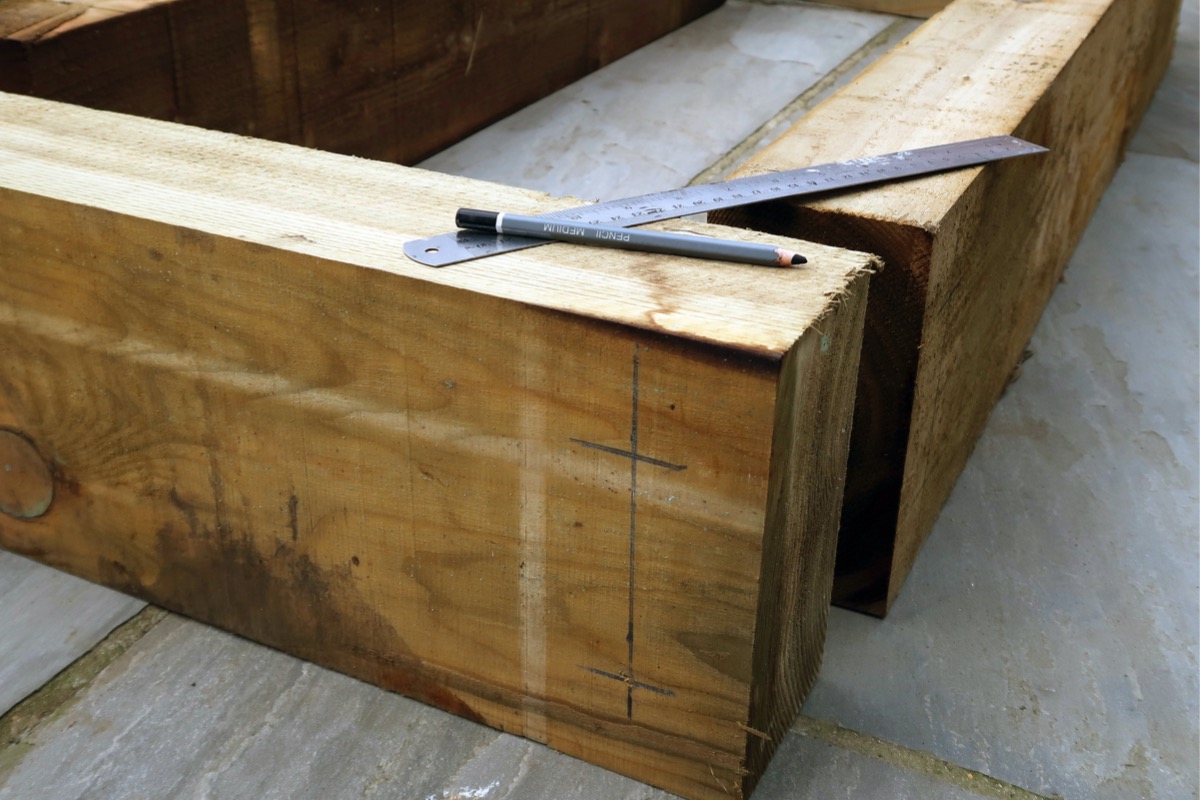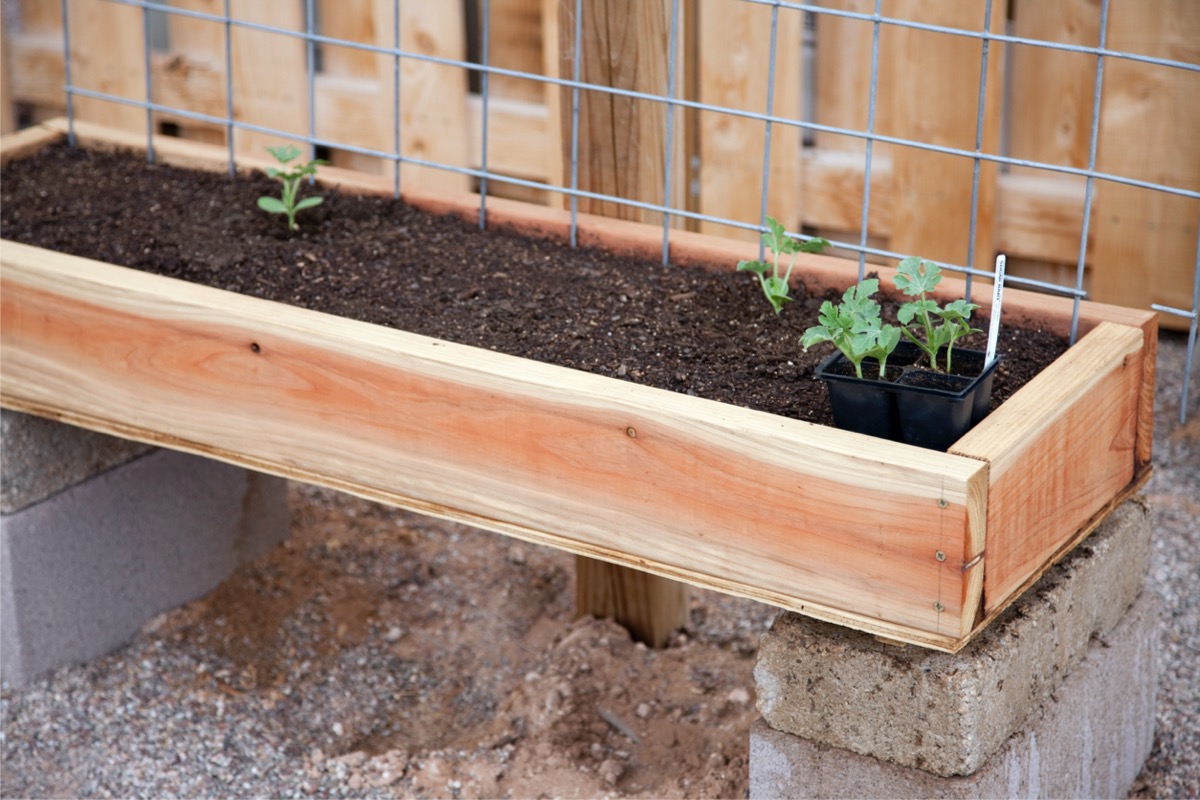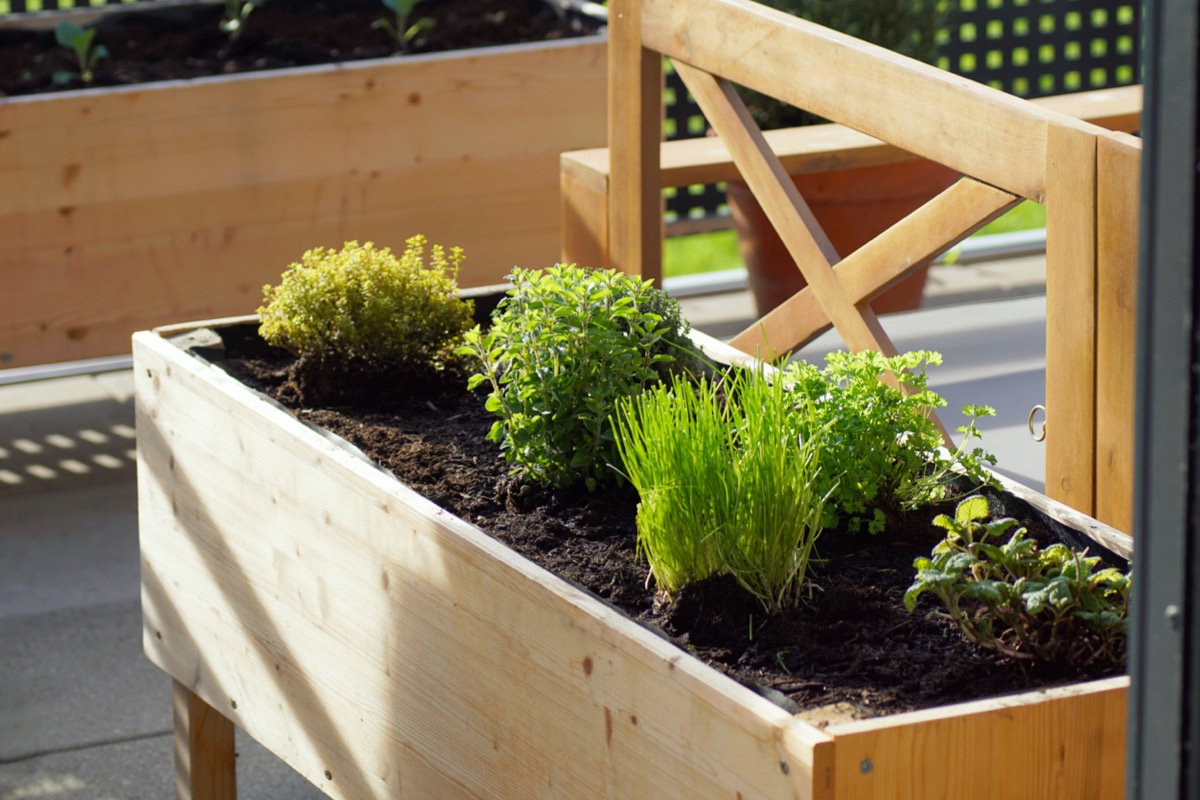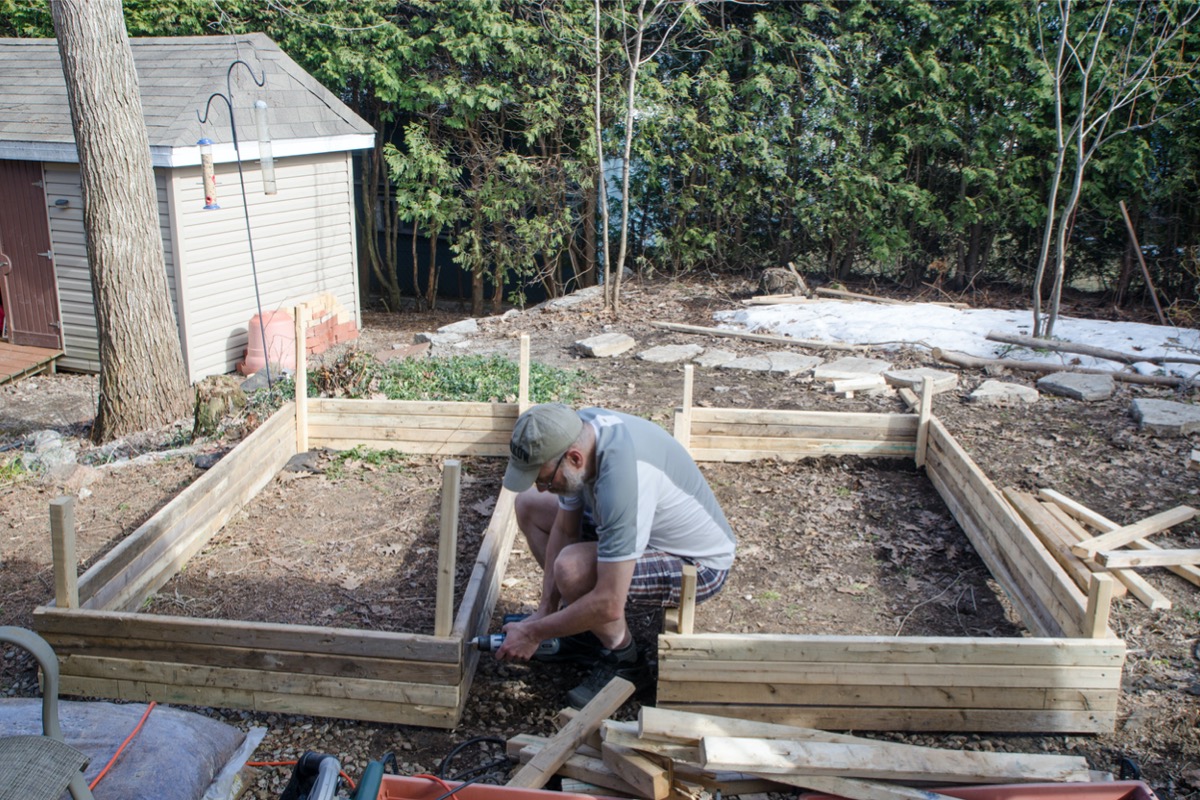We may earn revenue from the products available on this page and participate in affiliate programs. Learn More ›
Installing a raised garden bed is a great way to improve the appearance of the yard and take on a new hobby growing fresh vegetables at home. However, it’s important to select an appropriate type of wood for the raised garden beds to prevent chemical contamination. Additionally, it’s necessary to choose a rot-resistant and mildew-resistant type of wood for raised garden installations, so you can feel confident that the wood will last for years.
Opt for long-lasting redwood or cedar wood for garden beds if you don’t mind paying a higher price for these durable products, or you can save some money in the short run by choosing a common construction material, like pine. Discover the best wood for raised garden beds below.
RELATED: 10 Tips for Planning a Raised Garden Bed
Key Considerations When Selecting Wood for Raised Garden Beds
There are several important factors to consider before you decide on the best wood for raised beds in your garden. These factors include the durability of the lumber for raised beds, safety considerations to avoid accidental contamination, whether the wood is sourced from a Forest Stewardship Council-certified forest, and the cost of the wood to use for raised beds.
Durability: If you are installing a short-term raised garden bed at a rental property then durability isn’t as much of a factor because most woods will be able to last for about 3 to 4 years before succumbing to rot. However, if you want to install a long-term raised garden bed in your yard, then it’s important to find a rot- and pest-resistant type of wood, like cedar, which can last for up to 10 years before it starts to break down.
Safety: Growing vegetables at home is a great way to enjoy the outdoors and get something tangible for your efforts, but you need to choose the right type of wood to avoid contaminating the vegetables. To ensure that you can enjoy any vegetables grown in your garden, it’s necessary to avoid reclaimed wood, like shipping pallets, old railroad ties, and pressure–treated wood. Naturally pest-resistant woods, like cedar and redwood are ideal for vegetable gardens because they do not contain chemicals that can be harmful if ingested.
FSC certification: The Forest Stewardship Council (FSC) is a global organization focused on forestry conservation through inspection and certification processes. An FSC-certified forest has passed the international forest management standards, ensuring that the forestry practices follow strict environmental and socio-economic standards.
Cost: Depending on your budget, the best lumber for raised beds in your yard may simply be the most affordable, though it’s important to note that low-cost materials will not last as long as more expensive options. It’s recommended to spend more for materials if you will be installing a long-term garden bed in the yard, while it’s okay to invest in cheaper material if the garden bed is a short-term addition. Short-term garden beds are a great feature for rental properties because they can make a temporary home feel more permanent, without making any irreversible alterations to the property.
RELATED: 13 Ideas for a Vegetable Garden With Serious Curb Appeal

The Best Wood for Raised Garden Beds
Get to know the various types of wood, as well as the benefits and drawbacks to each type in order to determine the best wood for garden beds in your yard.
1. Cedar
Cedar is a long-lasting, durable type of wood that is ideal for constructing raised garden beds. It has a high level of natural tannins to help repel rot and pests, allowing the wood to remain strong and intact for up to 10 years before it begins to break down and degrade. The drawback of cedar is that it’s an expensive material compared to more affordable options, like pine. However, if you live in the eastern United States, cedar is more readily available, allowing retailers to sell it for a reduced price.
2. Redwood
If you don’t live in the eastern United States, then redwood may be a better option for controlling the cost of materials. It is comparable to cedar in durability and tannin content, ensuring that the wood remains protected from rot and pests for up to 10 years. You can also invest in heart redwood, which has a reputation for lasting a few years longer than cedar.

3. Juniper
Juniper is a rot-resistant wood that can be a good choice for creating a raised garden bed in your yard. It’s a durable option that also helps to fertilize the garden with natural oils that gradually leach out into the soil. If you live in the western United States, then you may be able to find juniper at a more affordable price than redwood or cedar, but if you don’t live in a region with dense juniper forests, then it can be difficult to find in local home improvement stores.
RELATED: The Best Soil for Raised Beds
4. Douglas Fir
While douglas fir lumber isn’t as durable or pest-resistant as cedar or redwood, it is an affordable option for a raised garden bed. The wood lasts for about 4 to 7 years and it’s relatively easy to find throughout the majority of the United States. Just keep in mind that if you want to continue using the raised garden, it’s important to replace the wood when it starts showing signs of rot.

5. Cypress
For anyone living along the southern coastline of the United States, cypress wood is an excellent alternative to cedar wood. It lasts for about 7 to 8 years and is more rot-resistant and pest-resistant than cheaper materials, like pine or douglas fir. However, if you don’t live along the southern coast it can be difficult to find cypress wood without putting in a custom order.
6. Black Locust
Similar to cypress wood, black locust wood is also more resistant to rot and pests than pine or fir, though it doesn’t have the same durability as cedar or redwood. Black locust trees are native to many regions throughout America, where it can be found in abundant quantities, but some states, like Connecticut, Maine, and Massachusetts, classify this tree as an invasive species, so it may not be available in local home improvement stores.
7. Pine
The least expensive and most readily available wood for a raised garden bed is pine. It’s ideal for short-term gardens at rental properties or temporary gardens that last for about 3 to 4 years. The short life of pine is because it has a low level of tannins, so it isn’t protected from rot, decay, and pests. If you want your garden to last for up to a decade, then pine is the right choice, but it’s recommended to go with pine if you just need a cheap type of wood that will do the job for a few years.
One Wood to Avoid: Pressure-Treated Wood
Chromated copper arsenate (CCA) was a common compound used to treat lumber, but in 2003 the Environmental Protection Agency (EPA) banned the sale of CCA-treated lumber due to the harmful effects of this chemical. Alkaline copper quat (ACQ) and copper azole (CA-B) replaced CCA as a protective treatment to help keep insects away and prevent fungi from attacking the wood. However, despite the change to safer chemicals, it still isn’t recommended to use pressure-treated wood in a garden bed because the chemicals can leach into the soil and potentially contaminate the plants.
In fact, the USDA’s organic regulations state that pressure treated wood should not be used if the lumber will be in contact with crops, soil, or livestock. Instead, invest in cedar or redwood to install a long-term raised garden bed with a high level of natural rot- and pest-resistant tannins.

Final Thoughts
Whether you are setting up a temporary raised garden for a single grow season or you are installing a broad, semi-permanent raised garden bed for several years of enjoyment, it’s necessary to avoid materials that can contaminate the garden. While this includes pressure-treated wood, it isn’t limited to lumber materials. You should also avoid using chlorinated plastic, cinder blocks, rubber tires, and galvanized metal. To keep your family safe from harmful chemicals, choose a natural material, like juniper wood, cypress wood, or pine to build your raised garden bed.
RELATED: 12 DIY Vegetable Garden Ideas


